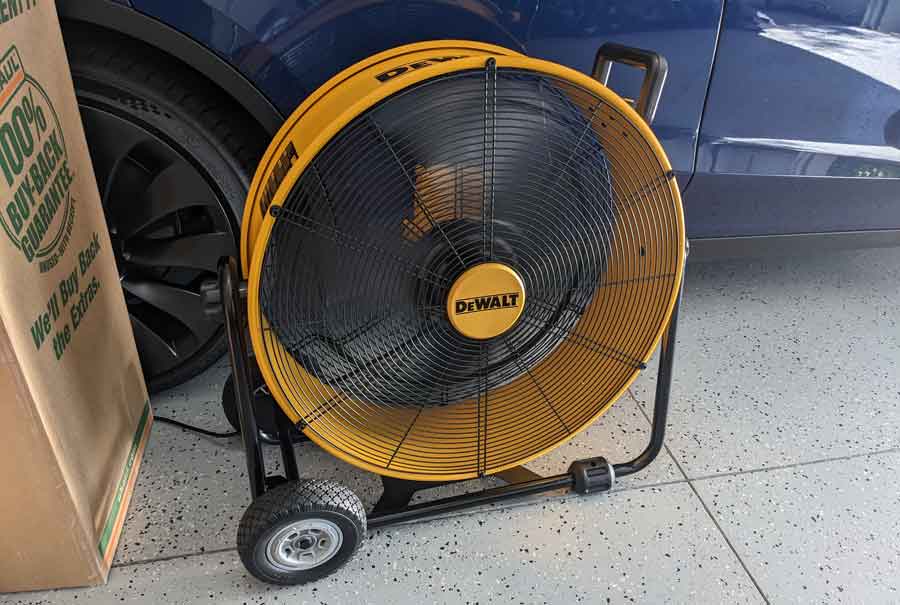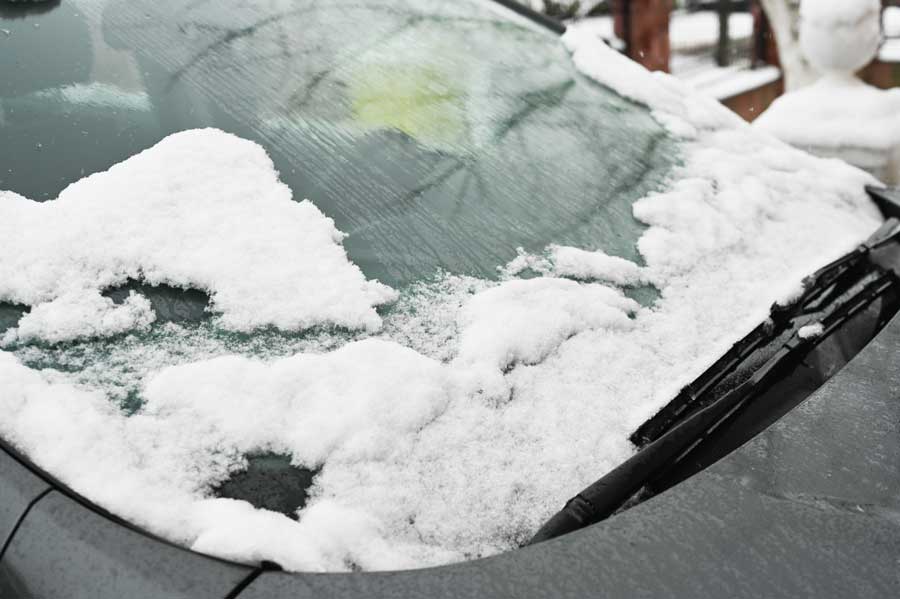Winter brings the challenge of snow melt in your garage. It’s not just a mess. The road salt mixed with the snow can damage your flooring and create a slipping hazard. In this article, we’ll tackle how to manage snow melt effectively.
With years of dealing with winter garage issues, I’ve learned some practical ways to keep your garage dry and safe. We’ll cover a range of methods, from improving drainage to using mats and controlling temperature.
This guide is for anyone who wants a cleaner, safer garage in winter. These tips will help whether you have a small puddle problem or a bigger snow melt issue.
Let’s start controlling snow melt in garages and get ready for winter.
Tips for Controlling Snow Melt in Garages
Controlling snow melt in garages can be challenging, especially during the winter months. This section focuses on practical and effective strategies to keep your garage floor dry this winter.
We’ll explore various methods, from enhancing drainage systems to using absorbent materials and maintaining the right temperature.
These solutions aim to keep your garage dry and safe, protecting it from potential damage caused by water and ice.
Whether you’re facing minor puddles or more significant snow-melt issues, this guide will help you find the right approach to managing and preventing these challenges and keep your garage dry in winter.
Clean Off Your Car Before Parking
It’s inconvenient, but the best way to control snow melt in your garage is to clean off your car before parking it.
I get it.
It’s cold outside.
Who wants to step out of their warm, cozy car into the freezing weather to clean off their car?
Think of it this way: the more snow and ice you can clean off your car, the less will end up on your garage floor.
Your ice scraper probably has a snow brush attachment to it. If not, any long, hard-bristled brush will do.
Start with your roof, then work your way down to your vehicle’s windshield, windows, mirrors, and sides.
Next, grab a second snow brush and get as much snow off your wheels and fenders as possible.
Why a second brush?
You want to avoid brushing all that dirty, salty, contaminated snow over the rest of your car’s surface.
Use Garage Mats to Catch Melting Snow
It’s impossible to clear off 100% of the snow on your car, especially if it is snowing outside.
That is when you need a good winter floor mat to catch melting snow.
Several companies make garage floor mats, but you must be careful which one you buy.
Some cushy floor mats are designed with a comfy foam surface, making it comfortable to work on your car. Others are thinner, slick surfaces to trap oil and grease before they stain your floor.
You’ll want something explicitly designed to trap snow, ice, or mud, channel it away from your vehicle, or hold it on the mat. Many winter floor mats come with integrated edges that ensure all snow and ice that falls onto the mat stays on the mat.
Garage mats are super-easy to install. Usually, they roll out flat on your garage door where you intend to park. Occasionally they are secured with tape or construction adhesive, but not always.
They come in different sizes, so get the right one for your car.
In a pinch, you can use old cardboard boxes to soak up the snow runoff from your car.
Squeegee Standing Water Outside
If you can’t get all the snow off your car and don’t have a garage mat to catch the melting snow, you need to focus on the cleanup.
An easy way to get rid of snow in your garage is to push it all out using a squeegee. Squeegees are easy to use and do an excellent job of pushing excess moisture off smooth surfaces.
Once you park your car, take a moment to wipe off the excess snow and use the squeegee to sweep it outside.
You want to do this before the snow melts.
If you wait until after the snow has melted, it’ll be harder to contain the water. Plus, the road grime will already be on your garage floor, which is what we’re trying to avoid.
Alternatively, getting the snow out of your garage is easier when your car isn’t in your way.
If possible, move your car outside before squeegeeing your wet garage floor. Then, clean your car and park it inside again.
If you don’t have a squeegee that you love, check out my list of the best garage floor squeegees here.
Install a Garage Floor Drain
Installing a floor drain in your garage is a great way to ensure you don’t have to worry about containing melting snow in the future.
It’s not the most straightforward task, and there are often building permits that you’ll need to pull. However, it’s not as complicated as it sounds.
Adding a floor drain is obviously easiest when building a new garage. If your garage is finished, you’ll need to cut the concrete floor to install your drain and slope the floor, so the water runs towards the drain.
You can install a regular square or circular drain or a trench drain.
Trench drains are considerably more expensive and require more work, but they will collect more runoff and keep your garage drier.
Trench drains run across the length or width of your garage. They can continue under the garage door and run across your driveway, collecting runoff from both.
Unless you’ve done concrete work before, I recommend having a professional install it for you.
Before installing a garage drain, check to see if they’re allowed in your municipality.
Building codes vary, and some local laws prohibit garage floor drains because they can collect hazardous waste, which can run off into the soil. You may need to install a trap to catch those toxic materials.
Add a Floor Blower Fan
Using a fan in the winter isn’t as strange as it might seem.
In this situation, you’re not using it for cooling but to help dry out your garage.
You’ll need a fan that stays close to the floor. Tall fans that you use on your porch in the summer might not work as well.

Unless you have a winter floor mat to contain the water, a garage fan will help the extra moisture dry quickly. This helps reduce the likelihood of accidents and stops the water from damaging any belongings stored in your garage.
Unfortunately, the colder it is, the harder it might be for your fan to dry up all the moisture.
However, a floor fan won’t protect your garage’s flooring from damage.
Seal Concrete Floor or Add Epoxy Floor Coating
Finally, seal or coat your concrete garage floors to protect them.
Concrete is porous, which means it absorbs moisture quickly. Unsealed concrete floors absorb moisture from melting snow.
When the temperatures rise and fall, the melted water thaws and freezes, putting stress on the floor, and this can cause cracks in your garage floor.
It won’t happen overnight, but repeated snow melt in a garage leads to long-term damage. By sealing or coating your garage floor, you will repel moisture and prevent it from getting absorbed into the concrete.
One step up from concrete sealer is an epoxy coating.
Epoxy floor coatings contain epoxy resin and a hardener, which bind together to create a durable outer layer. These coatings last several years and are resistant to stains, spills, and impact damage.
Sealing your garage floor won’t necessarily combat moisture. Your floor can still get wet, presenting a slip-and-fall hazard.
However, a sealant will protect your garage floor from the harsh chemicals in snow and ice melt.
FAQ About Controlling Snow Melt in Garages
Does salt help snow melt?
Yes, salt helps snow melt by lowering the freezing point of water. This means that the snow will melt at a lower temperature than normal, making it easier to clear off the driveway or garage floor.
How do I stop water from spreading in my garage?
One way to stop water from spreading in your garage is to install a barrier, such as a garage door threshold seal, that prevents snow melt from entering the garage. Another way is to use mats, squeegees, or pumps to absorb or remove the water before it spreads.
Does snow melt faster on concrete?
It depends on the temperature and the color of the concrete. Generally, snow melts faster on darker surfaces, such as asphalt, than on lighter surfaces, such as concrete, because they absorb more heat from the sun. However, snow will melt on both surfaces regardless of color if the air temperature is above freezing.
Is it bad to leave snow on concrete?
It can be bad to leave snow on concrete, especially if it contains road salt or other chemicals. Salt can seep into the concrete and cause cracks, stains, or corrosion over time. Therefore, controlling snow melt in garages with concrete floors is advisable to prevent damage.
Want even better protection? Check out this article where we have garage floor coatings ranked from best to worst in terms of durability, application, maintenance, and cost!

